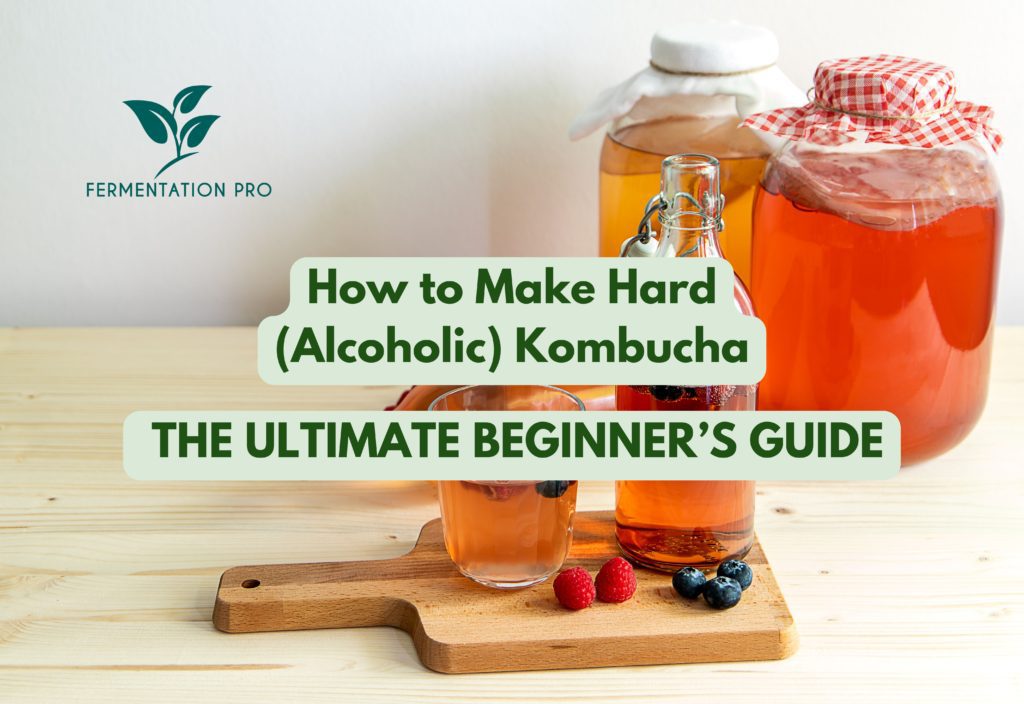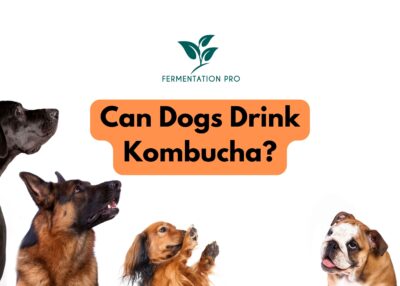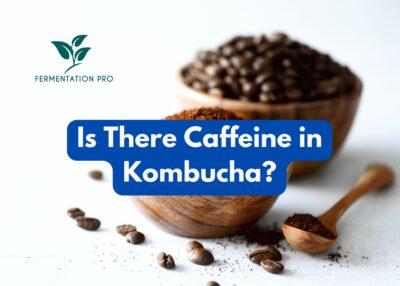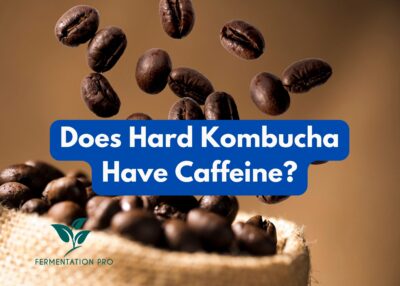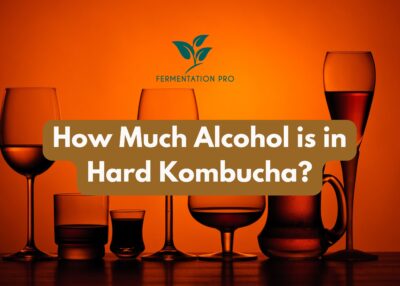Are you looking for a refreshing boozy drink that doesn’t compromise your health? If yes, then hard Kombucha might be exactly what you’re looking for!
Hard Kombucha is basically the alcoholic version of regular or traditional Kombucha. It contains an alcohol percentage that is similar to most beers and wine. However, hard Kombucha is deemed relatively healthy because of its low sugar, carbs, and calorie content.
In addition to the health benefits of hard Kombucha, many brewers continue to be fans of this drink because of how easy and rewarding it is to make. In fact, you will mostly just need the same basic ingredients used in brewing regular Kombucha to begin your hard Kombucha brew. However, there are some techniques and special information that you should know first before brewing this adult drink.
Table of Contents
What is the Difference Between Regular Kombucha and Hard Kombucha?
Before we discuss the differences between regular Kombucha and hard Kombucha, let’s know their similarities first. As we have briefly mentioned above, hard Kombucha shares the same ingredients as regular Kombucha which are: tea, water, sugar, and Symbiotic Colony of Bacteria and Yeast or simply SCOBY.
In addition to this, both the regular Kombucha and hard Kombucha are relatively low in sugar, carbs, and calories compared to other similar commercial beverages. Regular Kombucha only has 50 to 70 calories per 12 oz. of serving while hard Kombucha can have 85 to 120 calories per 12 oz. of serving.
Despite having these similarities, regular Kombucha and hard Kombucha differ in many ways. Below we discuss these differences one by one.
Hard Kombucha is for adults only
While it’s true that both the regular Kombucha and hard Kombucha contain alcohol. Their Alcohol By Volume (ABV) varies significantly. ABV is the metric used to measure the alcohol content of a beverage.
Regular Kombucha only contains below 0.5% ABV (for commercial kombucha, homebrewed booch may vary). With this ABV, regular Kombucha is considered non-alcoholic. According to the US’ Food and Drug Administration (FDA), beverages containing less than 0.5% ABV are considered non-alcoholic. Because of this, regular Kombucha is considered safe and available for sale to children and adults.
On the other hand, hard Kombucha is classified as an alcoholic drink because it contains more than 0.5 % ABV. This adult drink can have an ABV of between 0.5% to 8% depending on the fermentation process and other factors like the amount of yeast and sugar used. Since hard Kombucha is classified as alcoholic, it is only sold to 21 years and older.
Hard Kombucha ferments longer
Unlike regular Kombucha, hard Kombucha undergoes two to three fermentation processes that can take a total of more than 4 weeks.
The first fermentation of hard Kombucha is for making the Kombucha. It is a crucial part of the Kombucha making process that requires oxygen. This can take 6 to 10 days and more. The resulting Kombucha from the first fermentation typically only has less than 0.5% ABV.
Kombucha that has finished the first fermentation is safe and ready to drink. However, for higher alcohol content and enhanced flavor, the second fermentation is essential particularly for hard Kombucha. At this point, more sugar and yeast are needed to be added to boost the alcohol level of the hard Kombucha brew. Second fermentation can take about 14 to 30 days and can cause the hard Kombucha to gain 4% and higher ABV.
On the third fermentation, brewers add their desired flavors and seal the Kombucha shut to form carbonation. This carbonation causes the Kombucha to become fizzy. Regular Kombucha doesn’t usually undergo a third fermentation, however for hard Kombucha, this fermentation process is relatively important to further increase the alcohol content. This final fermentation process usually takes about 3 to 10 days depending on the progress of fermentation. At the end of the third fermentation, the hard Kombucha can have an ABV of up to 8%.
Essentially, the longer you allow your hard Kombucha to ferment with added yeast and sugar, the stronger and more alcoholic your hard Kombucha becomes.
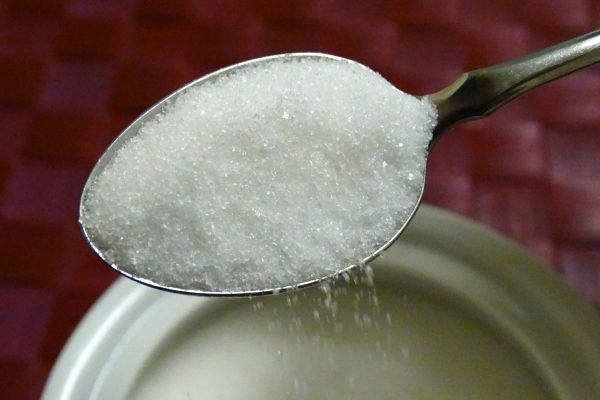
Hard Kombucha calls for more sugar
The amount of sugar you add to your hard Kombucha brew plays a major role in the alcohol production. In brewing hard Kombucha, you will need to increase the amount of sugar by 50% and more depending on how much you want to drive up the alcohol content of your brew.
In order to increase the alcohol content of hard Kombucha, you will need to feed the yeast more sugar. The more sugar the yeast consumes, the more alcohol it produces.
Speaking of yeast, did you know that yeast could make or break your hard Kombucha? In the next part, we will be discussing hard Kombucha yeast in further detail.
Hard Kombucha Yeast
All varieties of Kombucha contain a colony of bacteria and yeast called SCOBY. The yeast eats the sugars in the sweet tea and transforms them into alcohol. On the other hand, the bacteria feed on the alcohol and turn it into acidity, giving Kombucha its distinctively sour taste. Together with bacteria, the yeast transforms sweet tea to the Kombucha we all love.
Both bacteria and yeast are important however, in the case of hard Kombucha, the yeast plays a more important role as it is responsible for alcohol production.
According to research, alcoholic fermentation starts with the breakdown of sugars by yeasts. When the sugars are broken down, pyruvate molecules are formed. This process is referred to as glycolysis. When the glucose from the sugar undergoes glycolysis, two molecules of pyruvic acids are formed. These two molecules are later reduced to two molecules called ethanol and 2CO2. Ethanol is simply referred to as alcohol in many contexts.
Brewers add different strains of yeast during the alcoholic fermentation of hard Kombucha to drive up the ABV. When there is more yeast, more sugar is also broken down, therefore more alcohol is produced. If there is more alcohol produced, then the hard Kombucha can have a higher ABV percentage. After the overall brewing process, hard Kombucha can have 4.5% to 8% ABV.
The types of yeast you can use for your hard Kombucha are:
- Champagne yeast
- Ale yeast
- Wine yeast
- Brewer’s yeast
- Distillers yeast
- Baker’s yeast
How to Make Hard Kombucha
Nowadays, making hard Kombucha is almost foolproof with all the hard Kombucha recipes online that provide detailed instructions. However, these recipes do not guarantee the same results because of the different factors that can affect the fermentation process. Hence, it is always best that you experiment and decide on how to brew your own Kombucha.
If you are a beginner at making hard Kombucha, here is a basic guide on how to make your own hard Kombucha at home as well as some reminders to make your first brew a success!
Prepare the following ingredients and tools
Ingredients:
- Tea
- Sugar
- SCOBY
- Starter tea
- Yeast
Tools:
- Fermentation Jar with an airlock
- Cloth and rubber band
- Pressure-resistant or air tight bottles
First Fermentation
First fermentation ratio:
Tea Ratio 6:1
Prepare six teabags or six teaspoons of loose leaf tea for every one gallon batch.
Sugar Ratio 1:1
Use 1 cup of sugar for fermenting 1 gallon of brew. If you want to brew half a gallon of hard Kombucha then you can divide the measurement by two. If you want to brew 3 gallons, then multiply the amount by 3.
Sweet tea to Kombucha starter tea 9:1
90% of your Kombucha mixture should be sweet tea or the water, tea, and sugar mixture. Meanwhile, 10% of your brew should be your Kombucha starter tea
Here is an example recipe for more reference. You may also use this recipe in making your Kombucha. Feel free to adjust the quantity of ingredients but remember to use the ratio above as a guide.
- 17 cups of water
- 1 cup sugar
- 6 tea bags
- 2 cups of starter tea
- 1 SCOBY
Here is the procedure for first fermentation
Step 1: Make sweet tea. Bring the water to a boil and brew your tea for 20 to 40 minutes
Step 2: Remove your tea bags or tea leaves
Step 3: Add sugar and stir to dissolve
Step 4: Transfer your brewed tea and sugar or sweet tea mixture in your fermentation jar. Let it cool down to room temperature.
Step 5: Add the starter tea and Kombucha SCOBY
Step 6: Cover with cloth and secure it around the fermentation jar with a rubber band
Step 7: Allow fermentation for 6 to 10 days and more depending on the progress of fermentation. You should ferment your Kombucha in a dark room with a room temperature of 70℉ to 75 ℉.
Second Fermentation
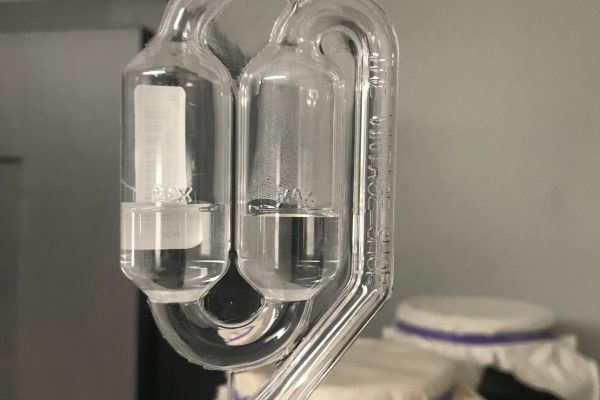
Step 1: Make a slurry of yeast, sugar, and water to increase alcohol content.
Below we’ve provided a yeast slurry recipe for 1 gallon of Kombucha that finished first fermentation:
- 1 cup of hot water
- 1 cup of white sugar
- 1 tsp of yeast (or 1 packet)
Mix together the hot water and sugar and let it cool to lukewarm temperature before stirring in the yeast. Allow the yeast to activate for about 5 to 15 minutes. You will know it is working by seeing bubbles for on the surface.
Step 2: Remove the SCOBY from the Kombucha that finished first fermentation
Step 3: Add your slurry and stir to mix thoroughly
Step 4: Add an airlock to your brewing vessel or transfer your kombucha to a vessel with an airlock.
Step 5: Allow fermentation for 14 to 30 days at the same temperature during the first fermentation.
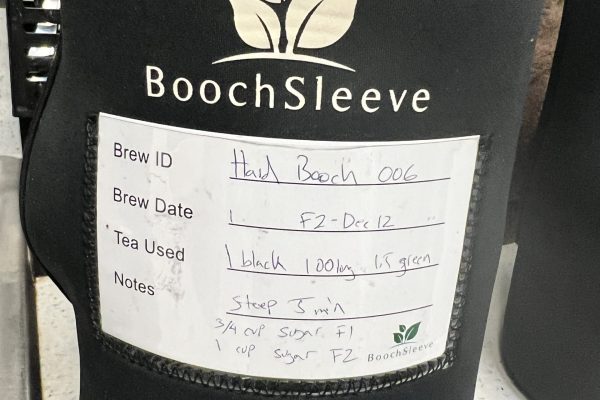
Third Fermentation
Step 1: Transfer your Kombucha using a funnel to airtight bottles like swing-top bottles to make it fizzy. Make sure to leave 1 inch or less difference between the mouth of the bottle and the surface of the Kombucha
Step 2: Add your desired flavorings. For each bottle, only add about 10% to 20% of flavorings. Remember to leave some space for the carbonation.
Step 3: Allow fermentation for 3 to 10 days
Step 4: Enjoy your hard Kombucha!
How Do You Make Strong Alcoholic Kombucha?
While hard Kombucha is already considered alcoholic, there are still several things you can do to hike up the alcohol content of this beverage. Below we’ve listed down the most effective ways to make strong alcoholic Kombucha.
- Choose your yeast wisely
As we have discussed above, the yeast is an essential part in the alcohol production of Kombucha. While it’s okay to use almost any type of yeast including baking yeast, it is better to use specialty yeast like brewer’s yeast if you are aiming for a high alcohol content.
In a comparison mentioned in an article, it was noted that brewer’s yeast was bred to produce more alcohol and less CO2 while baker’s yeast was bred to make more CO2 and less alcohol. Hence, using baker’s yeast for hard Kombucha will not increase the alcohol content as much as brewer’s yeast can.
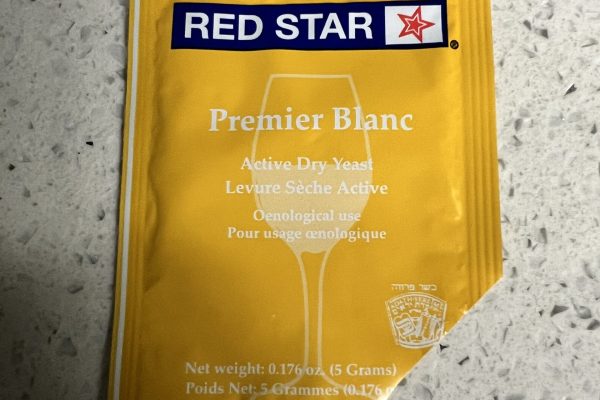
- Increase the sugar
The yeast needs sugar to feed on in order to produce more alcohol. Essentially, the more sugar there is, the higher alcohol content your Kombucha can have. You usually add more sugar to your Kombucha during the second fermentation. However, you can also increase the amount of sugar by up to 50% on the first fermentation for higher ABV.
On the second fermentation, you can opt to add flavorings like fruits for more sugar. However, it is still better to add more sugar than fruits as it is easier to break down by the yeast. Sugar remains to be the most efficient option for hiking up the alcohol content of your hard Kombucha.
Mad Millie fermentation blog reminds brewers that cane sugar or white sugar is the best sugar for Kombucha brewing. Despite having many sweetener options, white sugar remains to be the most accessible sucrose source for the yeast. In addition, brewers should not use artificial sweeteners like Erythritol, Aspartame, and Sucralose. Stevia is also not a good choice for Kombucha brewing.
- Brew your hard Kombucha for a longer time
Allowing your hard Kombucha to ferment longer during the second fermentation allows your yeast to break down more sugar which results in more alcohol. You can leave your Kombucha to brew for up to 30 days during the second fermentation. However, take note that allowing your Kombucha to ferment longer will not just result in more alcohol content but also a more sour taste.
- Use a strong starter tea.
A strong starter tea can help kick start the fermentation process faster. The strongest starter tea you can use is the liquid from the bottom of a previous batch or SCOBY hotel. The bottom of each brew is considered the strongest because it has the highest concentration of yeast.
The starter tea from the bottom of a brew is filled with yeast and other sediments that are from the SCOBY. Some people opt to strain these sediments but if you want higher ABV, we recommend using it as it is.
How Long Does It Take for Kombucha to Become Alcoholic?
While it is true that the longer fermentation time can boost alcohol content, this rule doesn’t apply when you don’t add sugar and yeast to your Kombucha brew. Your Kombucha will only likely become alcoholic after the second fermentation when you add more yeast and sugar.
With added yeast and sugar on the second fermentation, your Kombucha is likely to become alcoholic in 7 to 14 days. By the end of the second fermentation, the Kombucha will have more than 0.5% ABV and will have a dry and boozy flavor almost similar to beer.
Can Homemade Kombucha Be Alcoholic?
All kinds of Kombucha naturally contain alcohol, but this alcohol level varies significantly depending on the variety you brew.
If you are brewing regular homemade Kombucha and have just followed the usual steps in brewing without the extra yeast and sugar, then your homemade Kombucha is non-alcoholic.
However, if you intend to brew homemade alcoholic Kombucha or hard Kombucha, and have added more sugar and yeast, then your Kombucha will be alcoholic even if it is homemade. Just like commercial hard Kombucha, homemade hard Kombucha can have up to 8% ABV.
How Do You Test the Alcohol Content of Homemade Kombucha?
The most affordable and accessible way for testing the ABV of your home brewed Kombucha is by using an alcohol testing kit. This kit is widely available in different brewing supplies stores and online stores like Amazon.
In this kit, you get a hydrometer, a plastic test jar and some cleaning accessories. This set of tools allow you to easily calculate the ABV of brewed beverages including Kombucha. The hydrometer is the most important part of an alcohol testing kit. This tubelike tool allows brewers to calculate the ABV percentages of alcoholic brews like hard Kombucha.
To use an alcohol testing kit, simply fill the plastic test jar with a sample from your Kombucha brew. Make sure that the temperature of your sample is around 60℉ to get accurate readings. Additionally, if your sample is fizzy, you’ll have to degas it by pouring it back and forth between two glasses or containers. The fizziness in your hard Kombucha is caused by CO2 gas. When the CO2 gas is present, the results of the reading can be incorrect.
Next, float the hydrometer on the sample and give it a spin to make sure that it is floating in the middle and will not hit the side of the test jar. Then, read the specific gravity or potential alcohol. You will see this on the part of the hydrometer which intersects on the surface of the Kombucha sample.
After reading the ABV of your sample, discard the sample immediately. Do not put it back to your fermenting jar to avoid contamination.
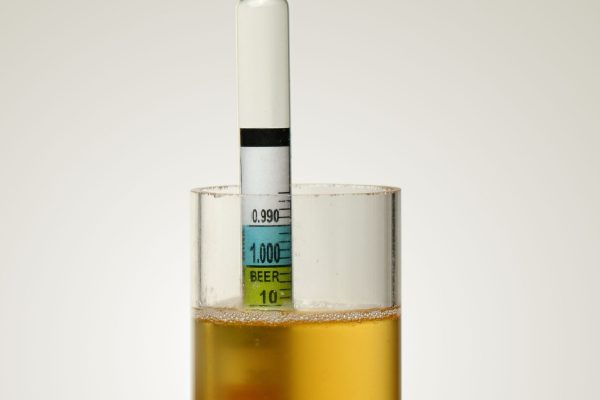
Unlike regular Kombucha, hard Kombucha may not be as effective when it comes to restoring and nourishing the gut.
Is Hard Kombucha Healthier than Wine?
The low calories, sugar, and carbs are definitely a health advantage of hard Kombucha over wine. Hard Kombucha only contains 85 to 120 cal per 12 oz. while wine contains 282 cal and more in the same serving size. However, this is pretty much the most vital benefit of hard Kombucha.
According to an interview with a dietician conducted by Yahoo Lifestyle, the amount of probiotics present in hard Kombucha is not the same as regular Kombucha. This is because some bacteria cannot thrive in the high ABV of hard Kombucha. In addition, the amount of bacteria that can reach the colon is lesser so they may not be able to benefit the gut in any way. In simple terms, the alcohol in hard Kombucha kills some of the bacteria.
Nevertheless, hard Kombucha still contains important polyphenols and antioxidants from its tea content. Polyphenols are compounds in plants that can promote good blood circulation in the body. They can also lessen and help manage the blood sugar levels. On the other hand, antioxidants protect the cells from free radicals. Free radicals are unstable molecules that damage healthy cells and cause diseases. When polyphenols and antioxidants work together, they can protect the body’s tissues and prevent diseases like cancer, inflammations, and heart disease.
All in all, we can conclude that hard Kombucha can be healthier than wine. But that still depends on how your body reacts to the ABV and how much hard Kombucha you drink. Bodies may have different reactions to alcohol and drinking more than what your body can tolerate can cause adverse effects like nausea, vomiting, and more.

